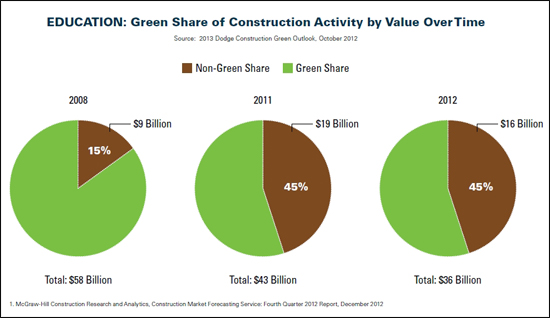
Earth Protect Blog
- Font size: Larger Smaller
- Hits: 4196
- 0 Comments
Higher Education is Shaping the Future for Green Design
In 2012, despite a 39 percent decline in education sector-related construction, the growth in its total green share was estimated to be $16 billion, almost double the 2008 green education market, according to the new report from McGraw-Hill Construction, "New and Retrofit Green Schools: The Cost Benefits and Influence of a Green School."
According to the report, in this year, the education sector accounted for 8 percent of all construction starts and 24 percent of total non-residential construction starts (see chart below).

Higher education has a unique potential to guide other sectors by demonstrating its pursuit of the triple-bottom-line metrics for evaluating its green projects.
Not only are higher education institutions concerned about green design, they are also supporting Renewable Energy Credits (RECs), the purchase of energy that supports the research and development of renewable energy providers. The American College and University President's Climate Commitment (ACUPCC) data demonstrate that higher education is the third largest purchaser of RECs in the U.S., by purchasing a total of 1.3 million kWh of RECs. This makes RECs more viable as an industry for all sectors.
Another compelling data-piece was the climate neutrality dates -- 103 institutions have committed to relatively early climate neutrality dates [from 2012 to 2030].
Comments
-
Please login first in order for you to submit comments














